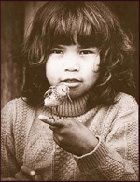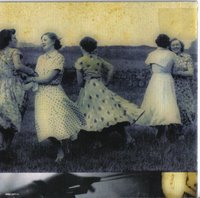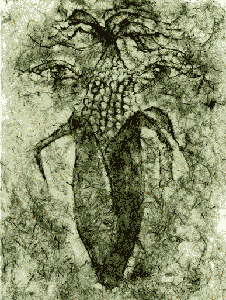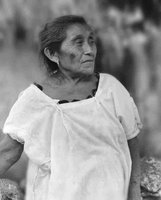
Gratitude is a holy thing to celebrate, as are true cross-cultural peaceful relations. The sincere offering of Thanks for the blessings that abound in our lives is fundamental to many of us in our spiritual and personal ways, and may be a universally vital part of being fully human. We can embrace the opportunity for this holiday and make it meaningful for us, but lets be real about the roots of this particular tradition, and teach the children the truth.
Deconstructing the Myths of “The First Thanksgiving”by Judy Dow (Abenaki) and Beverly Slapin
What is it about the story of “The First Thanksgiving” that makes it essential to be taught in virtually every grade from preschool through high school? What is it about the story that is so seductive? Why has it become an annual elementary school tradition to hold Thanksgiving pageants, with young children dressing up in paper-bag costumes and feather-duster headdresses and marching around the schoolyard? Why is it seen as necessary for fake “pilgrims” and fake “Indians” (portrayed by real children, many of whom are Indian) to sit down every year to a fake feast, acting out fake scenarios and reciting fake dialogue about friendship? And why do teachers all over the country continue (for the most part, unknowingly) to perpetuate this myth year after year after year?
Is it because as Americans we have a deep need to believe that the soil we live on and the country on which it is based was founded on integrity and cooperation? This belief would help contradict any feelings of guilt that could haunt us when we look at our role in more recent history in dealing with other indigenous peoples in other countries. If we dare to give up the “myth” we may have to take responsibility for our actions both concerning indigenous peoples of this land as well as those brought to this land in violation of everything that makes us human. The realization of these truths untold might crumble the foundation of what many believe is a true democracy. As good people, can we be strong enough to learn the truths of our collective past? Can we learn from our mistakes? This would be our hope.
Myth: “The First Thanksgiving” occurred in 1621.
Fact: No one knows when the “first” thanksgiving occurred. People have been giving thanks for as long as people have existed. Indigenous nations all over the world have celebrations of the harvest that come from very old traditions; for Native peoples, thanksgiving comes not once a year, but every day, for all the gifts of life. To refer to the harvest feast of 1621 as “The First Thanksgiving” disappears Indian peoples in the eyes of non-Native children.
Myth: The Pilgrims found corn.
Fact: Just a few days after landing, a party of about 16 settlers led by Captain Myles Standish followed a Nauset trail and came upon an iron kettle and a cache of Indian corn buried in the sand. They made off with the corn and returned a few days later with reinforcements. This larger group “found” a larger store of corn, about ten bushels, and took it. They also “found” several graves, and, according to Mourt’s Relation, “brought sundry of the prettiest things away” from a child’s grave and then covered up the corpse. They also “found” two Indian dwellings and “some of the best things we took away with us.” (5) There is no record that restitution was ever made for the stolen corn, and the Wampanoag did not soon forget the colonists’ ransacking of Indian graves
Myth: Samoset appeared out of nowhere, and along with Squanto became friends with the Pilgrims. Squanto helped the Pilgrims survive and joined them at “The First Thanksgiving.”
Fact: Samoset, an eastern Abenaki chief, was the first to contact the Plimoth colonists. He was investigating the settlement to gather information and report to Massasoit, the head sachem in the Wampanoag territory. In his hand, Samoset carried two arrows: one blunt and one pointed. The question to the settlers was: are you friend or foe? Samoset brought Tisquantum (Squanto), one of the few survivors of the original Wampanoag village of Pawtuxet, to meet the English and keep an eye on them. Tisquantum had been taken captive by English captains several years earlier, and both he and Samoset spoke English. Tisquantum agreed to live among the colonists and serve as a translator. Massasoit also sent Hobbamock and his family to live near the colony to keep an eye on the settlement and also to watch Tisquantum, whom Massasoit did not trust. The Wampanoag oral tradition says that Massasoit ordered Tisquantum killed after he tried to stir up the English against the Wampanoag. Massasoit himself lost face after his years of dealing with the English only led to warfare and land grabs. Tisquantum is viewed by Wampanoag people as a traitor, for his scheming against other Native people for his own gain. Massasoit is viewed as a wise and generous leader whose affection for the English may have led him to be too tolerant of their ways
Myth: The Pilgrims and Indians became great friends.
Fact: A mere generation later, the balance of power had shifted so enormously and the theft of land by the European settlers had become so egregious that the Wampanoag were forced into battle. In 1637, English soldiers massacred some 700 Pequot men, women and children at Mystic Fort, burning many of them alive in their homes and shooting those who fled. The colony of Connecticut and Massachusetts Bay Colony observed a day of thanksgiving commemorating the massacre. By 1675, there were some 50,000 colonists in the place they had named “New England.” That year, Metacom, a son of Massasoit, one of the first whose generosity had saved the lives of the starving settlers, led a rebellion against them. By the end of the conflict known as “King Philip’s War,” most of the Indian peoples of the Northeast region had been either completely wiped out, sold into slavery, or had fled for safety into Canada. Shortly after Metacom’s death, Plimoth Colony declared a day of thanksgiving for the English victory over the Indians
Myth: Thanksgiving is a happy time.
Fact: For many Indian people, “Thanksgiving” is a time of mourning, of remembering how a gift of generosity was rewarded by theft of land and seed corn, extermination of many from disease and gun, and near total destruction of many more from forced assimilation. As currently celebrated in this country, “Thanksgiving” is a bitter reminder of 500 years of betrayal returned for friendship.

This article can be found in its entirety at:
http://www.oyate.org/resources/longthanks.htmlThe Plimoth Plantation of Plymouth Ma. has recently dedicated a new Exhibit, "Irreconcible Differences", that provides an insight into the relationship of the Wampanoags and the Pilgrims in the years following 1620.
More about the Wampanoag:
http://www.wampanoagtribe.net/Pages/indexhttp://www.pilgrims.net/native_americans/Article by a Sioux woman on the Selling of Native Spiritual Traditions:
http://www.yvwiiusdinvnohii.net/News2000/0800/WC000801Commentary.htm

































